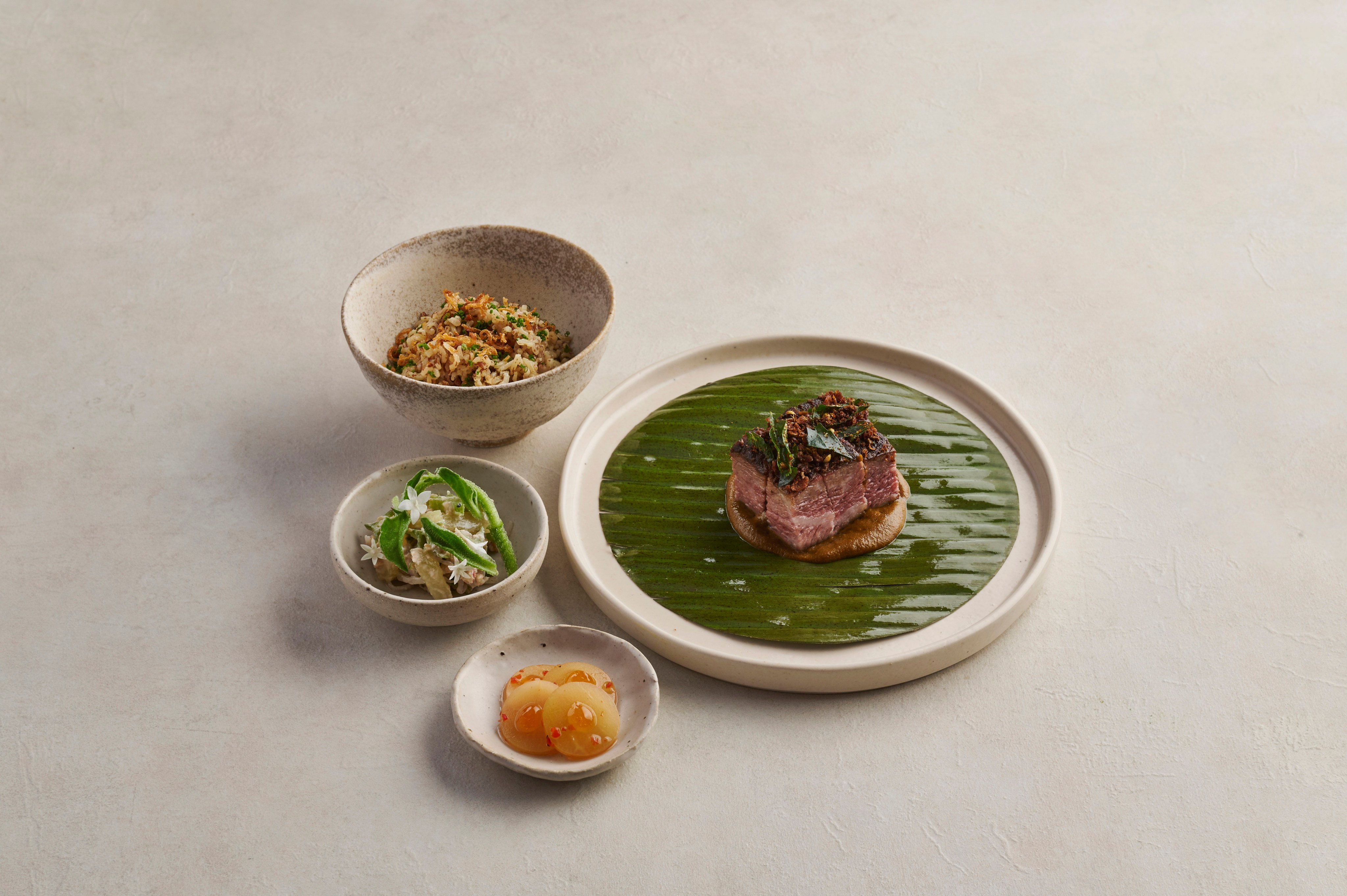
- Khir Johari won the ‘Oscars’ of culinary literature for his book tracing the history of Malay food, and welcomes chefs’ efforts to present it in new ways
One does not often see a traditional mortar and pestle in the kitchen of a fine-dining restaurant. But there it is, taking pride of place at the newly opened Restaurant Fiz in Singapore’s buzzy Tanjong Pagar neighbourhood, where it is used to coax out the rich, earthy flavours of ingredients used in Malay cuisine.
It is the latest in a small but growing cadre of restaurants in Singapore – and the region – that are focusing on introducing the indigenous flavours, ingredients and dishes of Malay cuisine to fine-dining aficionados.
In Kuala Lumpur, there is the one-Michelin-star contemporary Malaysian restaurant Dewakan, by chef Darren Teoh, as well as Kaum, an Indonesian restaurant based in Jakarta and Bali that focuses on the indigenous cooking methods and exotic ingredients of the country’s tribal communities.

This cuisine is also gaining international recognition on a literal level. At the 2023 Gourmand World Food Culture Awards, Singaporean author Khir Johari’s book, The Food of Singapore Malays: Gastronomic Travels Through the Archipelago, received four accolades in the Singapore division, including best Asian cuisines cookbook, best culinary history book, best printer and best book of the year.
The best book of the year category is the awards’ highest distinction and likened to winning the Oscars: the ultimate accolade for authors who have made significant contributions to the culinary world.
Has New York had it with high-end sushi? Chef’s counters are closing
“I am inclined to say, it has become a catalyst for a movement. It has triggered conversations around what Channel News Asia calls, ‘Singapore’s first cuisine’. Suddenly, Malay food is viewed with a different lens – it is not your everyday hawker centre food,” says Khir.
His book, which traces the cuisine from the 7th century Srivijaya empire to the present day, involved 11 years of research with museums and academics and extensive on-the-ground interviews.
The book not only takes a deep dive into Singapore’s role in the evolution of Malay cuisine, it also highlights the significance of long-held culinary concepts such as foraging, and food as medicine.
“This win is about the community and the cuisine that it represents,” says Khir. “Few people in Singapore and beyond have given pause to think about the deeper nuances and intricacies of the food of Singapore Malays beyond the dishes that are commercially available.
“This lets the reader relearn aspects of our culture that many of us feel that we have lost. Foraging, for example – made trendy with Noma – has been our way of life, and a vital part of the Malay dining table.”

After spending so much time studying the history of Malay cuisine, it is exciting, he says, to witness the blossoming of the next generation of chefs who are introducing facets of this culinary culture to a new audience.
“We are now seeing chefs and restaurants proudly plate up their own interpretations of Malay cuisine,” says Khir. “This recent development is wonderful in that the chefs and restaurants have the culinary skills to realise aspects of Malay cuisine that otherwise would be impossible to showcase in a mainstream setting.”
At Restaurant Fiz, chefs use the humble mortar and pestle as well as modern kitchen equipment in full view of diners. It is one of the countless ways chef-owner Hafizzul Hashim, who was born and brought up in Malaysia by Malay and English parents, draws on his cultural heritage.
His inaugural menu features dishes that encompass his childhood and early adulthood in Lumut, Perak.
“The blender makes the [preparation] process faster and [it’s]easier to clean up but it also sacrifices flavour as the blender introduces heat into the process,” says Hafizzul. “This affects the oils and compounds in the ingredients, losing some of the depth and complexity of the traditional flavours.”
Hafizzul previously worked at Michelin-star restaurants such as Jean-Georges Tokyo and Mirabelle and Chez Bruce in London.
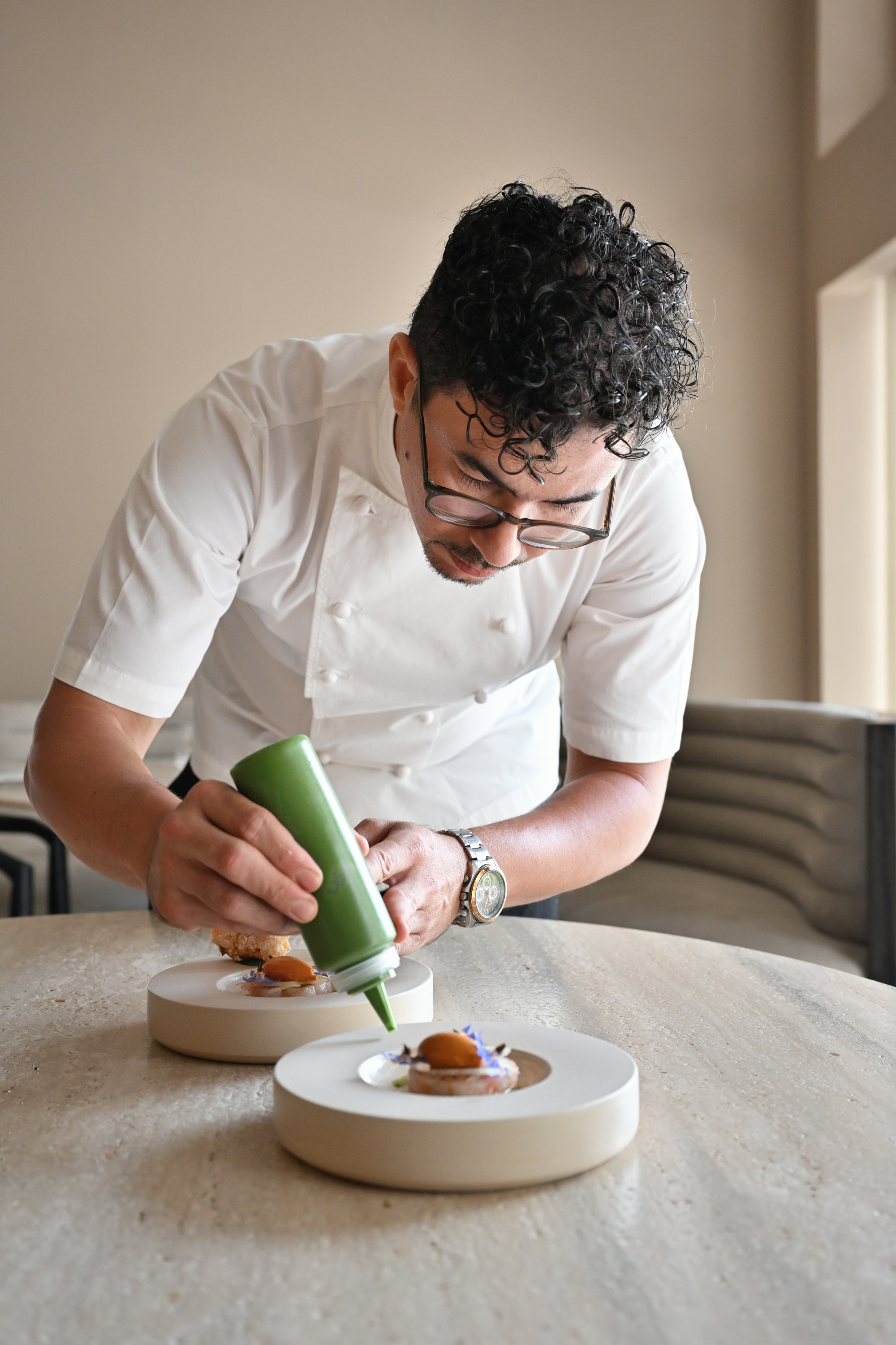
A highlight at Fiz is a delicate snack comprising a charcoal-grilled aged firefly squid with sambal tumis (fried sambal) enclosed in a crispy pie tee cup, evoking the hearty flavours of the nasi lemak (coconut rice) that his mother used to make.
One of the restaurant’s multifaceted courses, titled A Meal At My Home, pays homage to Asian communal meals, featuring a grand spread of dishes meant to be eaten with rice – of which there are two forgotten indigenous varieties to choose from.
Main dishes such as sea bream are grilled and served with the chef’s family heirloom sambal tumis, and plant-based dishes such as young jackfruit salad and chayote shoots.
Yet many chefs face challenges in showcasing a cuisine that global diners are unfamiliar with.
“Our hearts are in the right place; we do not want to serve a dish that will shock you,” says Dewakan’s Teoh, who recently travelled to Singapore for a culinary collaboration with Ivan Brehm, chef-owner of Nouri. “What we do want is to display the ingredients in the best possible way and perhaps share why it is important that it is on the plate.”
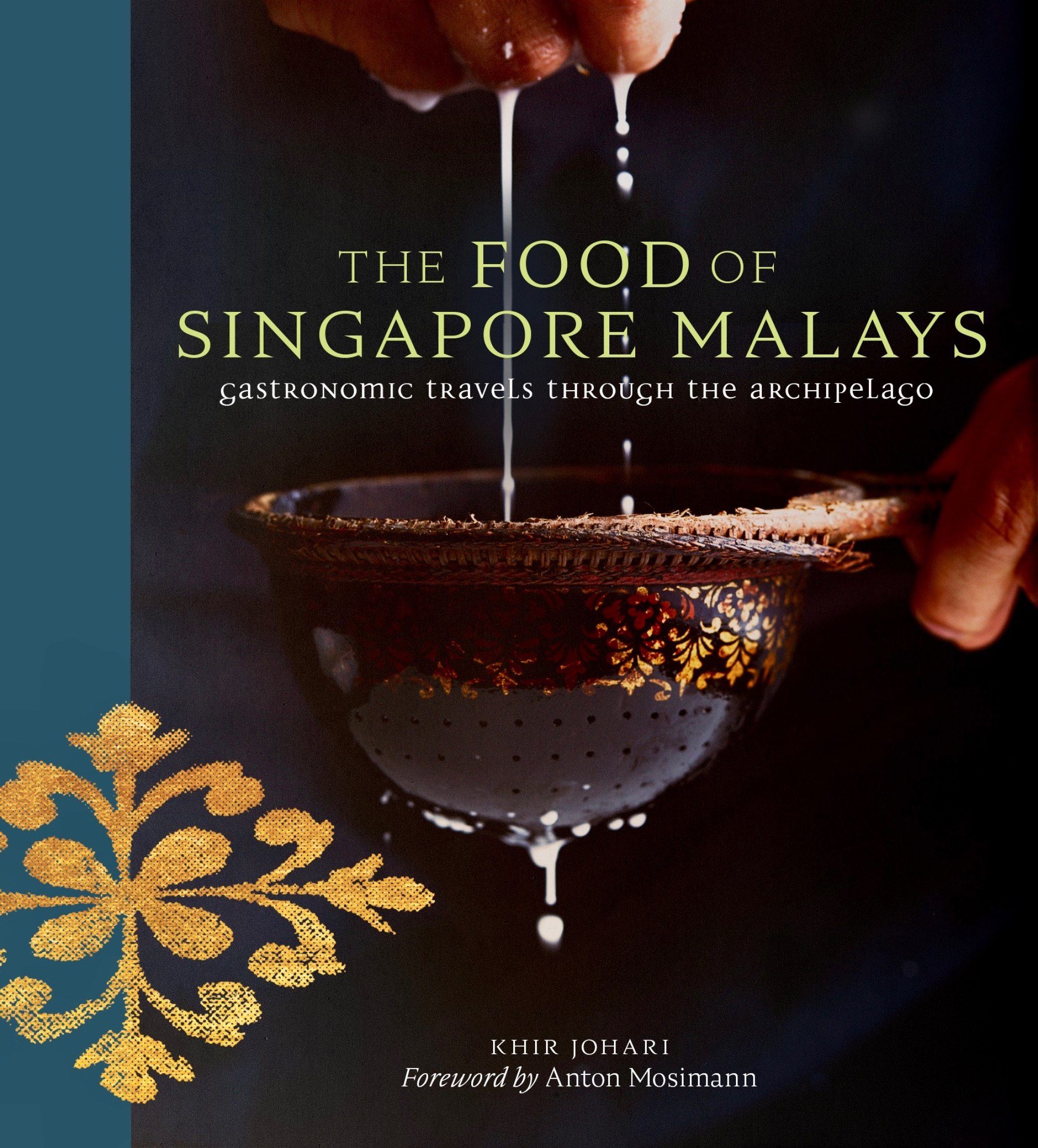
To demystify some elements of indigenous cooking, Dewakan’s guests are given a tour of the kitchen, where they get to see, smell and taste some of the raw ingredients.
“It is extremely important to contextualise what we put in front of guests because some flavours are not recognisable, and it helps to put into perspective the rest of the meal,” says Teoh.
Agreeing, Khir adds: “In Singapore, we are in danger of losing our culinary memories of where our food comes from. We have to relearn and embrace old ways of eating. Malay cuisine is tied to the land, and the community has lived in harmony with the gifts of nature for generations.”

This is one area where the new generation of fine-dining chefs are making progress, he says. “Many of them use heritage recipes and present them in a fine-dining fashion, where careful attention is paid to the provenance while respecting and upholding traditions. In essence, their dishes are beautiful ideas made edible that are meant to tell a story.”
Six of Khir Johani’s favourite Malay restaurants
The author talks about six of his favourite restaurants in Singapore, Malaysia and Indonesia.

1. Warong Nasi Pariaman
Come here for the most authentic nasi Padang experience. They still steam their rice there and cook with charcoal which imparts the smokiness that is missing in many other Malay establishments.
738 North Bridge Road, Singapore
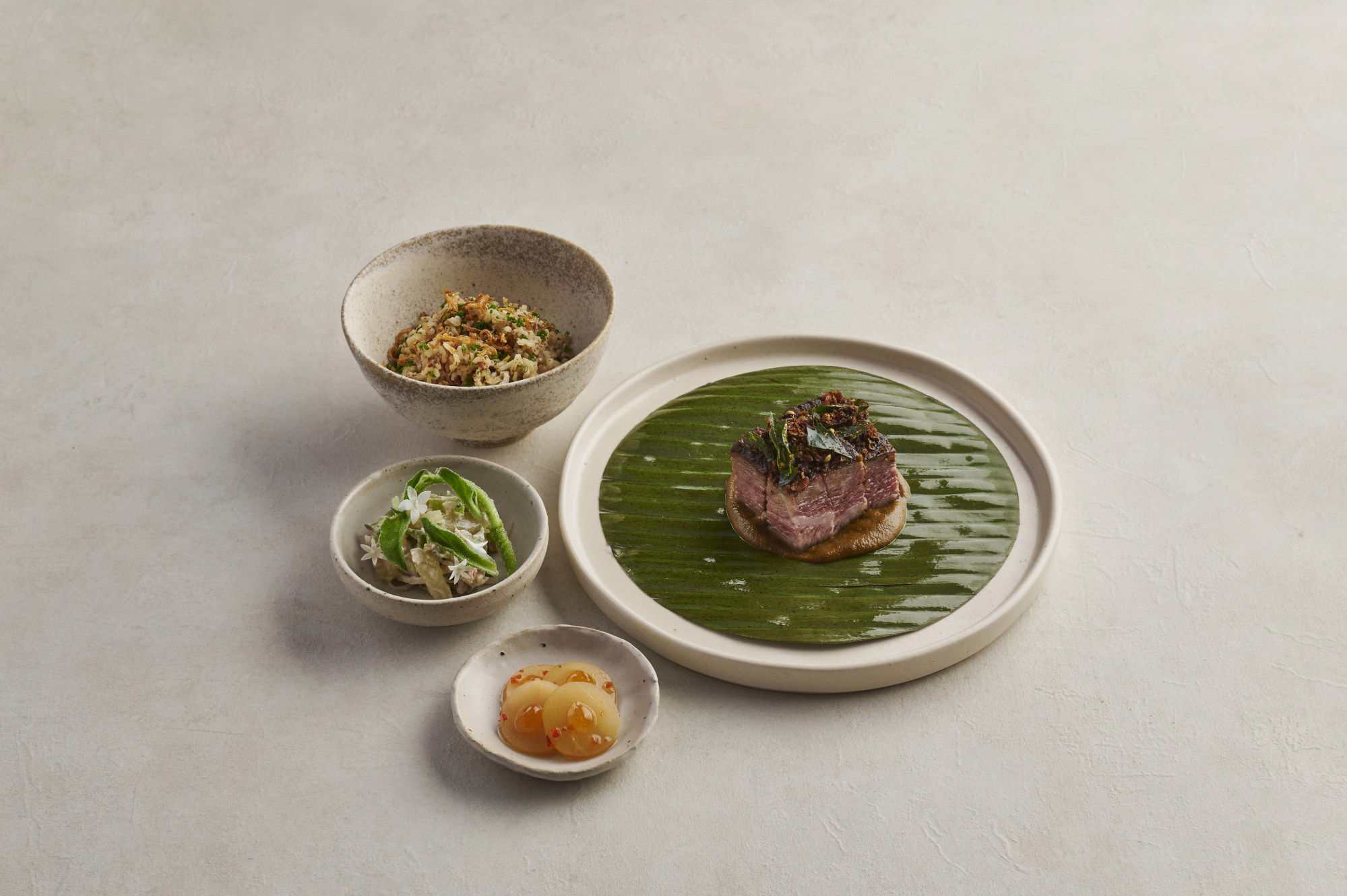
2. Seroja
This is the first restaurant in Singapore that proudly plates up Nusantara cuisine in such a space. The flavours are on point and the techniques are sound.
7 Fraser Street 01-30 Duo Galleria, Singapore
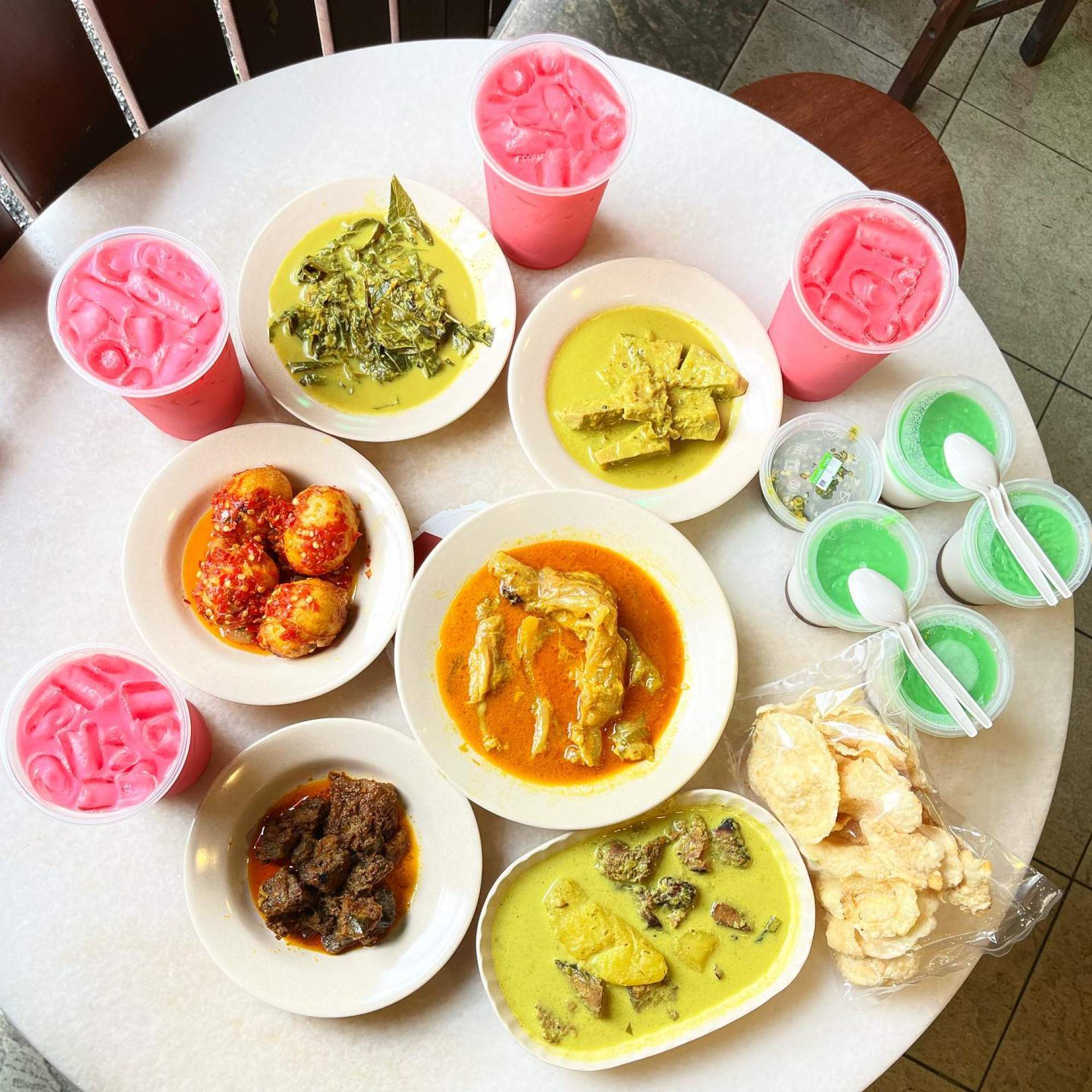
3. Sambal Hijau
This restaurant, in a traditional kampong (village), serves up a smorgasbord of traditional Malaysian Malay dishes.
2990 Jalan Sungai Penchala, Kampung Sungai Penchala, Kuala Lumpur, Malaysia
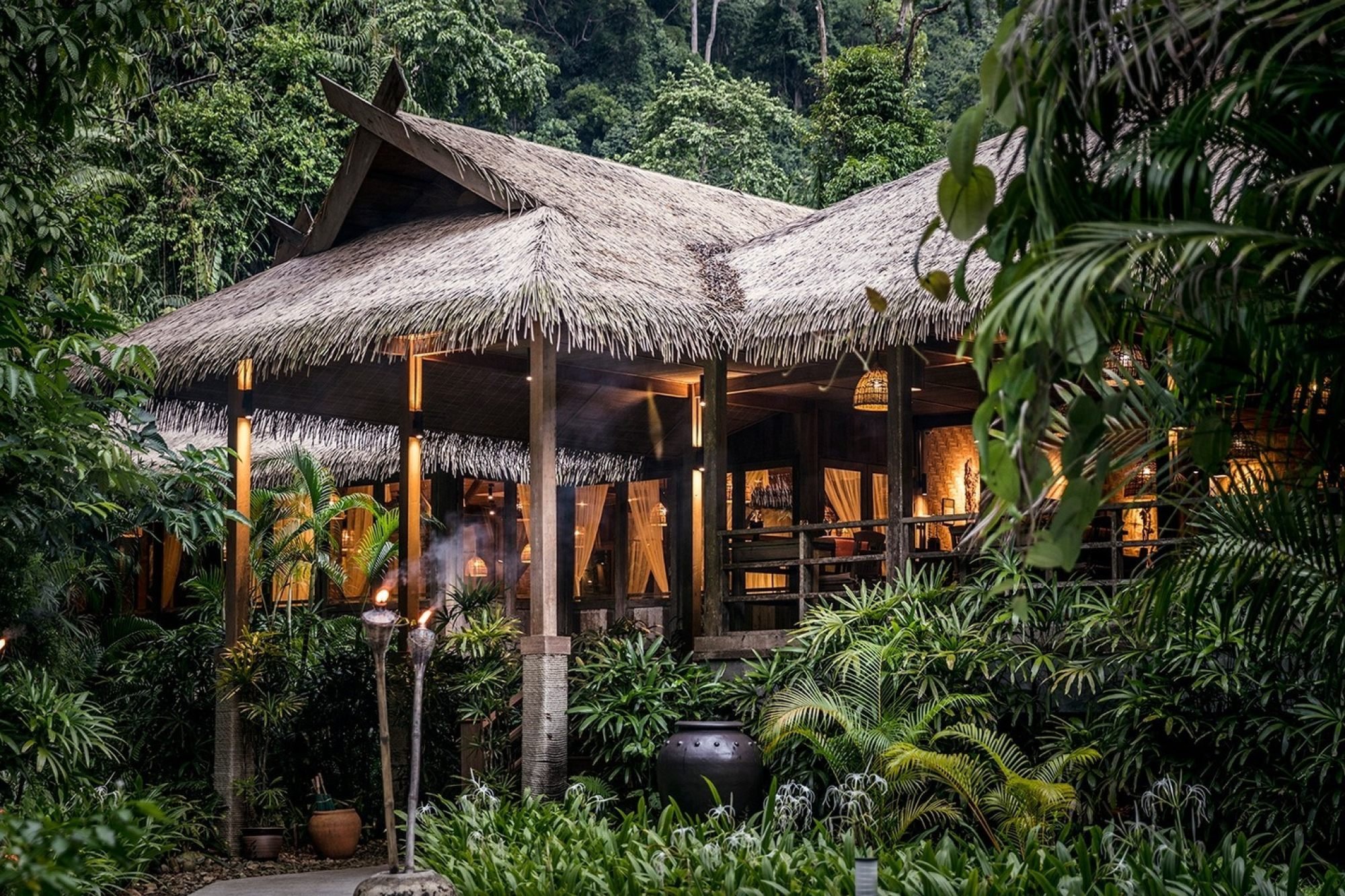
4. Gulai House at the Datai Langkawi
This upscale restaurant has my pick for serving up some of the best traditional Malay meals in a rainforest setting. It really recalls Malay cuisine’s close relationship with nature.
Jln Teluk Datai, Pulau Langkawi, Malaysia
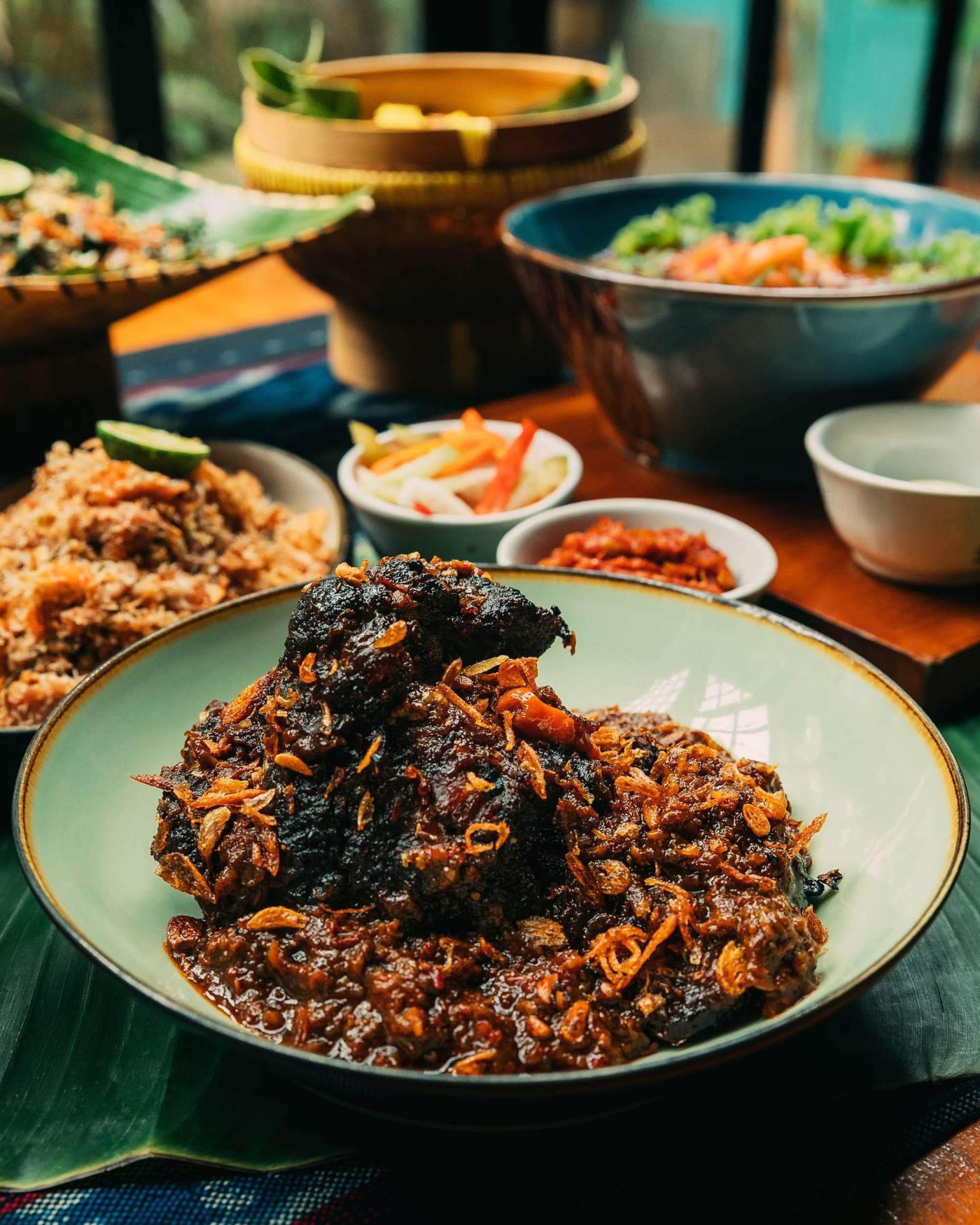
5. Kaum Jakarta
This restaurant is less cuisine specific and more pan-archipelago. It has a monthly feature on the various cuisines of Indonesia.
Jl. Dr. Kusuma Atmaja No 77, RW.4, Menteng, Kec. Menteng, Kota Jakarta Pusat, Indonesia

6. Bungarampai
This is a classic restaurant in a charming old colonial era building that serves Nusantara (Southeast Asian) cuisine
Jl. Teuku Cik Ditiro No.35, RT.10/RW.5, Menteng, Kec. Menteng, Kota Jakarta Pusat, Indonesia

